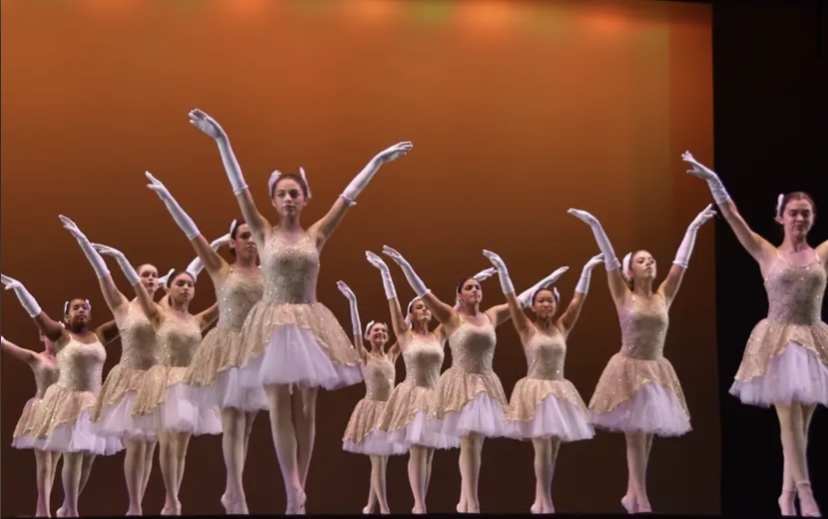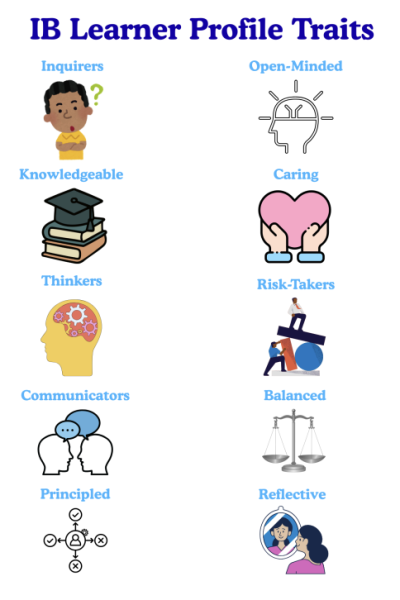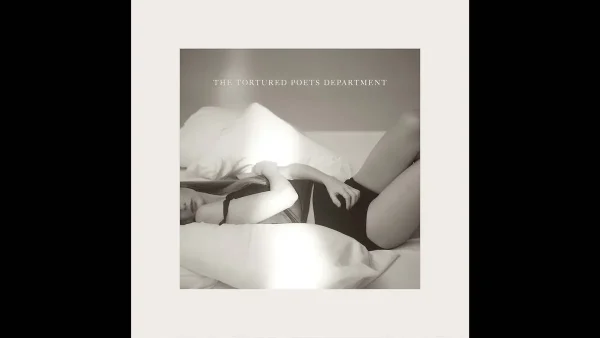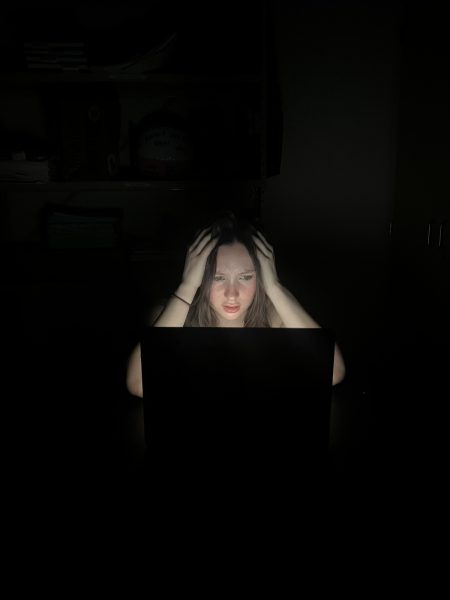What is the pointe?
The realities ballet dancers face
Merriam Webster defines ballet as a theatrical art form using dancing, music, and scenery to convey a story, theme, or atmosphere. While everybody, dancer or non-dancer, can agree, ballet dancers may have variations of this definition. I have two definitions for ballet; one that aligns with Merriam-Webster Dictionary and one that is entirely separate. My definition is ballet, both a sport and an art form, one that pushes one past their limits to excel in performance, flexibility, grace, and passion.
Ballet is one of the most physically and mentally draining art forms. From passion to rage, ballet makes one bottle up their emotions and perform them on a stage. They are pushed every single day, to the point where some people could never even imagine what one has to experience as a ballet dancer. Ballet and I have an on and off again relationship. I constantly have to remind myself why I still want to do it. Sometimes I ask myself why I keep going, because it would be much easier to give up on the sport. However, when I can express my emotions through my dancing, I am reminded of why I keep pushing myself every day.
Some ballet dancers start at extremely young ages, like two or three. Only a select few carry on into adulthood. There are also ballet dancers that start at ages around ten to 16. This could mean they truly love ballet more than those who started younger because they chose it. Then, some dancers who started as adults; people who are doing it truly as a hobby will most likely never seriously be able to perform and train in ballet.
When one starts ballet before adulthood, part of them has to give up their childhood because they have to train, stretch and rehearse for hours every day, just for a possibility of being one of the best someday. Ballet requires all the effort and perseverance one has and more. Rehearsals can run anywhere from two to twelve hours a day, and then one has to wake up and must repeat the same routine the next day. A harsh reality awaits ballet dancers because no matter how hard they push themselves, they will never reach perfection. Even if they train in dance every day, they may never make it seriously in the ballet world. This can be absolutely soul-crushing to realize.
A teachers’ impact on their students can change a ballerina’s life. When they are taught by a positive teacher who does not make them feel poorly about themselves or their dancing, they can grow as a dancer. It gives dancers the motivation to keep practicing and to work harder. When they have a negative teacher who makes them feel worse, whether it is about their overall dancing technique, looks, or anything in between, their progress could be delayed. Sometimes, they might push them so hard that they do end up making progress, but it only makes their love for ballet weaken and fade.
A large issue in the world of ballet centers around body image because there are many harmful expectations for ballerinas to fulfill. “Ballerina body” is a common phrase heard by many people. Most of the time, the people using this phrase are not ballet dancers, but I also tend to hear it from ballet teachers. This puts pressure on ballet dancers to perform the best they can, and to look the best they can.
I recall one specific time I was coming out of a ballet class, sitting in the lobby, waiting for one of my parents to pick me up. Little girls, probably around six to eight, were coming out of a ballet class. I overheard two moms talking about one of the little girl’s being bigger than the “typical” ballerina. They kept making numerous comments, and I felt so disgusted by their behavior. They were tearing apart a little girl and gossiping about her. Comments like these can lead to body image issues for young ballet dancers. Not only do negative comments from ballet teachers and non-dancers impact body image, but sometimes they can come from within. A ballet dancer’s harshest critic is themselves. This next piece of information is not a light topic, but it is an unfortunate reality for many ballet dancers. Many ballet dancers struggle with their relationship with food, and this is due to the environment of ballet. While the dance world is constantly advancing in acceptance towards all body types, there is still the same expectation of what a “ballerina body” should be, and this needs to change. Old fashioned teachers are one of the major reasons for why we are stuck in this harmful environment.
Ballet is also one of the most expensive sports/arts out there. The price point is one of the many negative aspects of ballet. So many dancers have to quit early because ballet becomes too expensive. Between the price of classes to pointe shoes, ballet costs thousands of dollars yearly. The price is higher if one is attending a ballet school or dancing professionally. However, it is still expensive for a ballet student. Pointe shoes are about $100 dollars, dance classes can range from $300-600 dollars for one season of classes (around 12 sessions), ballet leotards are around $40 dollars, and tights are not expensive, but they need to be replaced regularly. Depending on how advanced one is, one may need to get new pointe shoes regularly. Professional dancers will need to get new shoes every two to five days, and students may need them around every two weeks if they are dancing about six days a week. That can be around $1 thousand dollars monthly for professional dancers and just for pointe shoes. There are also private lessons, which most dancers take as they get older and become more advanced. My private lessons cost around $130 dollars per hour. Again, it all depends on how advanced one is and how often one dances.
Pointe shoes are shoes used in higher levels of ballet for ballet dancers to perform pointe work. It is a ballet shoe that allows dancers to dance directly on their toes. Pointe can cause countless injuries, one of the biggest reasons one must train for years before going on pointe. The time every dancer goes on pointe is different. It completely depends on whether or not their teacher believes they are ready for pointe. Some dancers go on pointe as young as nine. However, it is suggested to go on pointe when a person’s bones are fully developed at around 14 or 15. The best age to go on pointe is around 12 because one has more ankle stability, and it will give them time to dance on pointe and grow before they are an adult. different makers make different pointe shoes and each shoe is handmade by a specific maker. Having the proper pointe shoe makes a difference. For some professional dancers, when their pointe shoe maker retires, they also retire with them. As stated before, pointe shoes cost around $100 dollars and must be replaced often, depending on the dancer’s level. Again, these prices cause anxiety for dancers as they grow older and may lack the income to support their passion.
As a ballet dancer, one feels the pressure to be the best. Another reason this pressure is even worse is that dancers are constantly reminded time is not on their side. It feels like as a dancer, one has an expiration date. Most dancers retire at around thirty-five, so there may not be enough time to succeed. I feel so much stress because I do not have enough time to do what I love and I’m only 15. Especially for women, the time they have left runs out faster.
Ballet is one of the most beautiful art forms there is. I cannot imagine my life without ballet because it is my whole world. My passion for ballet is strong and I hope that it never fades. I want to remind everybody that ballet is complex and we work hard to make it look graceful. In reality, it is not as graceful as it looks. We are pushing ourselves further every day by going past our limits and working to be the best we can be. The feelings I have revolving around ballet constantly change. Sometimes I fall out of love with it, but I am always quick to be reminded why I love it. I want people to understand the difficulty of ballet, both mentally and physically. This is a reminder that there is always time to start ballet because if one works hard and applies effort, there is a possibility to go above and beyond.













